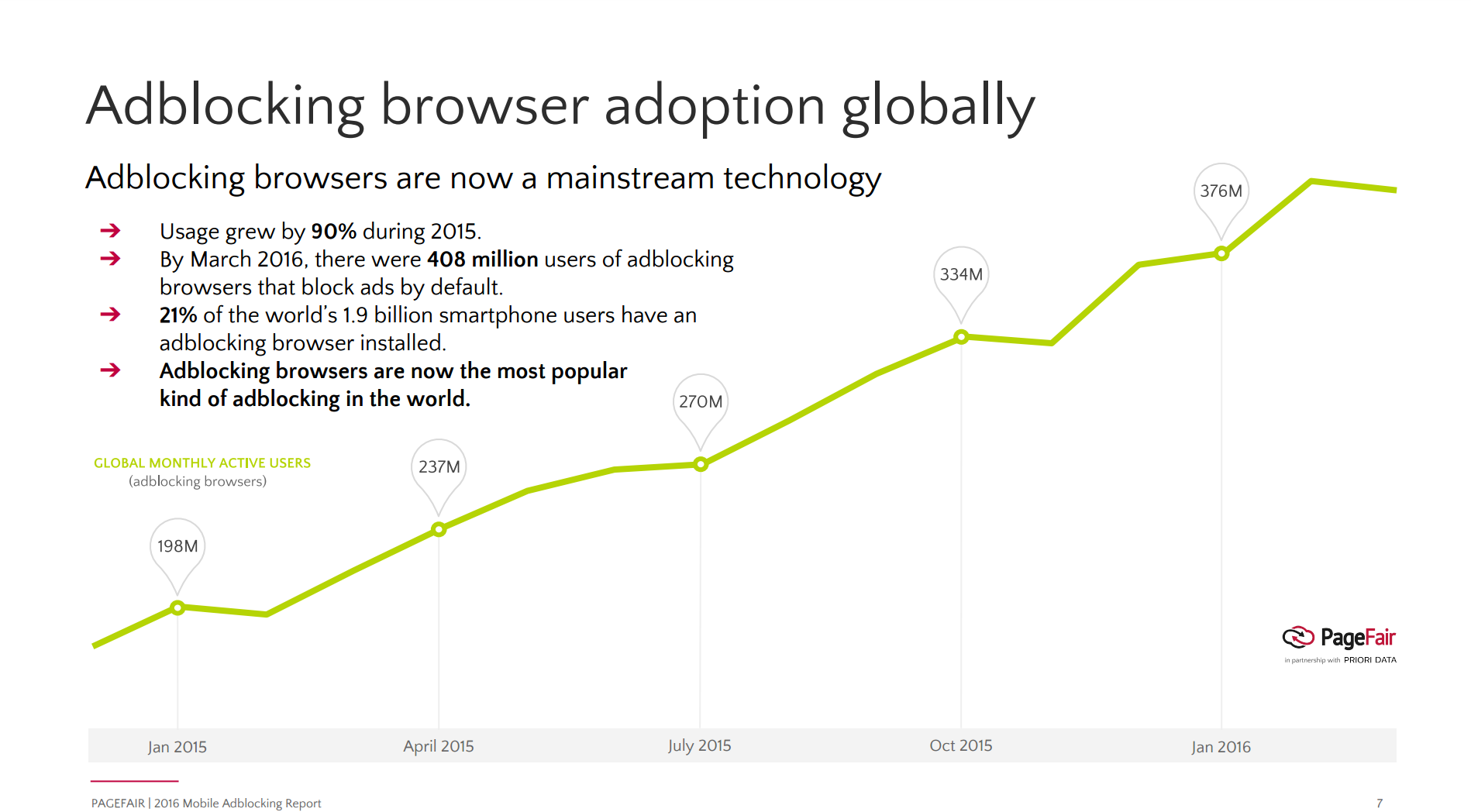Hundreds of millions of smartphone users, many of them in overseas markets such as China, Indonesia and Pakistan, are now blocking ads on their mobile devices, according to a new report.
Although ad blocking has traditionally been confined to desktop browsers, the report indicates a trend toward adoption of the software on mobile devices. According to PageFair, which released the report, one in five smartphone users now has an ad-blocking browser installed; about 408 million people now use these browsers regularly.
Further, the use of ad blockers on the mobile web grew by 90 percent in 2015, according to PageFair.

Screenshot, PageFair report.
The report isn’t good news for publishers worldwide, although Western news organizations have so far been relatively insulated from the rise of mobile ad blockers, according to the report. The boom seems to be rampant in emerging markets, where sluggish connections put a premium on miserly data use.
However, mobile ad blocking is likely to accelerate in Western countries as an increasing number of manufacturers and browsers include the software as a feature, according the report.
The same ad-blocking technologies that are mainstream in emerging markets have relatively low adoption in Western countries, likely due to more affordable mobile data costs in North America and Europe. Nonetheless, high rates of desktop ad blocking in Western countries indicate an appetite for ad blocking, which may easily shift to mobile unless advertising practices change.
PageFair, it should be noted, has a vested interest in the results of the report; it sells software to publishers aimed at thwarting ad blockers. The company was also behind a widely cited report that claimed ad blockers would sap billions of dollars from publishers in 2015; that report drew fire from critics for overstating the amount news organizations would lose.
But Monday’s report attempts to distance itself from “conjecture and hyperbole” by featuring information from Priori Data, an intelligence firm PageFair says “maps the real trajectory of adblocking usage as it shifts to mobile devices.”
Some other interesting findings:
- Most blocking worldwide is enabled by mobile browsers, not iOS apps. Content-blocking iOS apps have only been downloaded about 4.5 million times worldwide, compared to hundreds of millions of mobile browser blockers.
- In-app blocking is now possible. Native apps, generally considered immune to the rise of ad blockers, are now subject to the software.
- Ad-blocking browsers are more than twice as popular in Europe than in North America. There are 11.2 million users of ad-blocking browsers in Europe, compared to 2.8 million in North America. For both countries, that number remains a relatively small fraction of total smartphone users, however: In Europe, just 27 of every 1,000 smartphone users has an ad-blocking browser installed; In North America, there are 12.4 users of ad-blocking browsers for every smartphone.
- Facebook isn’t immune from ad blockers. Apps that aggregate feeds from social networks, such as Friendly Social, can display the content with the ads stripped away.
You can read the full report here.






